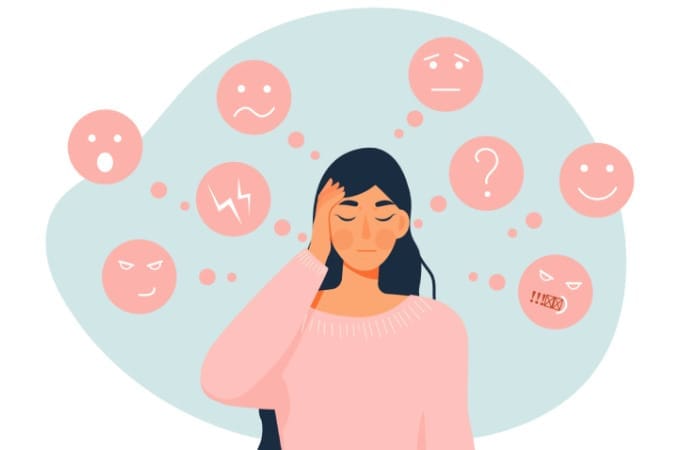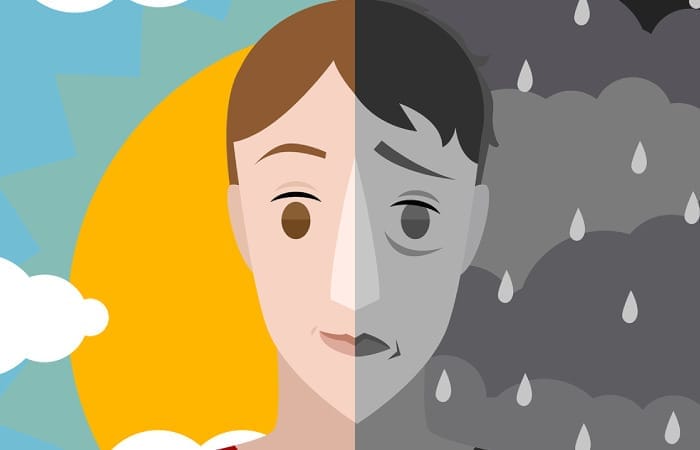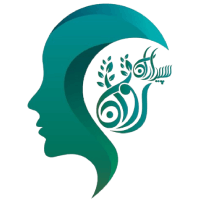Mood disorders
Mood disorders are a series of fluctuations that everyone experiences in life that can vary widely. When these fluctuations don’t affect our work and daily life, we don’t classify them as mood disorders. However, when the fluctuations become severe to the point that a person is paralyzed and unable to work and move, then it seems that they have a mood disorder and require treatment. When you don’t feel like getting out of bed and performing your usual tasks, having difficulties in maintaining relationships, or experiencing excessive energy that leads to aggression and a desire to harm others, then it is time to consider the possibility of a mood disorder. 

Factors causing mood disorders
Mood disorders have different factors, which we will introduce below. Factors of mood disorders include the following:- Neurobiological factors
- Social factors
- Psychological factors
Neurobiological factors
Like the amount of sleep: poor sleep and insomnia lower the threshold of irritability and make you suffer from mood swings. Too much sleep also puts you into a phase of depression and discouragement.Social factors
Like family conflicts: if families do not manage their emotions correctly, feelings, excitements, expressions, and desires, they will have problems. Wrong interaction with the family and problems in relationships between members can be one of the reasons for mood disorders.Psychological factors
Disappointment: Disappointment occurs when a person feels the desired result is too far, regardless of their efforts. They may believe that only bad outcomes are possible. In a way, he sees every current as equal to the function of death; in the function of death, when a person dies, there’s nothing you can do. This mindset can lead to despair and mood disorders, and in severe cases, even depression or suicide.
What does mood mean?
Mood refers to a person’s persistent emotional state, which can significantly influence their worldview, decisions, and interactions with others. The stability and impact of one’s mood can shape one’s life path. The external appearance of your mood is called “Affect,” which others observe and use to determine how to engage with that person. However, it’s important to note that a person’s outward emotions may not always reflect their inner state. For example, a person experiences a low or sad mood inside, and his external emotion also represents his sadness, meanwhile, someone may feel sad internally while displaying a happy or neutral emotion externally.Types of mood disorders
Mood disorders include:- Major Depression
- Bipolar
- Hypomania
- Dysthymia
- Cyclothymia
Major Depressive Disorder
Major depression can sometimes run in families, but it can often affect people who don’t have a family history of the condition. Most people feel sad at some point in their lives. But major depression is characterized by a depressed mood most of the day, sometimes especially in the morning, and loss of interest in routine activities and relationships, symptoms that are present every day for at least two weeks. The nine symptoms of major depressive disorder include depressed mood, loss of interest or pleasure in many or all activities, trouble sleeping, significant weight loss or gain, noticeable fast or slow movements, fatigue or low energy, difficulty in thinking or making decisions, feelings of guilt or worthlessness, frequent thoughts of death or suicide or attempted suicide.Suggested article: Bipolar disorder
فهرست عناوین
ToggleBipolar Disorder
This disorder involves cycling between two phases of depression and euphoria. During the depression phase, the person experiences symptoms such as sleep disturbances, reduced speech, inactivity, boredom, lack of motivation for work or social activities, diminished interest in previously enjoyable activities, social withdrawal, decreased sexual desire, and reduced appetite. In the other phase of this disorder, the person is opposite to the first phase. He is in a state of euphoria and mania. In this state, they may feel like everything is going perfectly and believe they have immense power to change the world.
